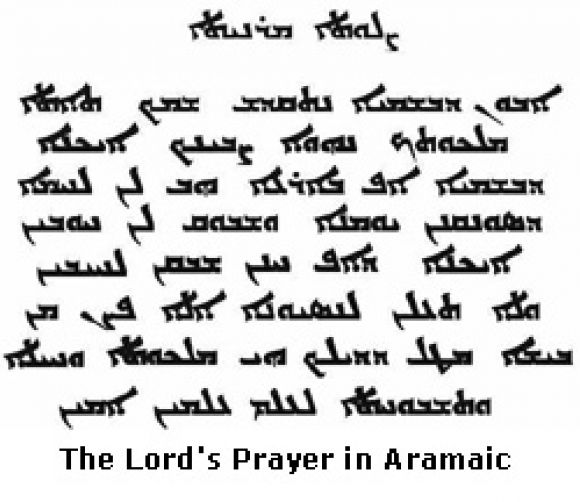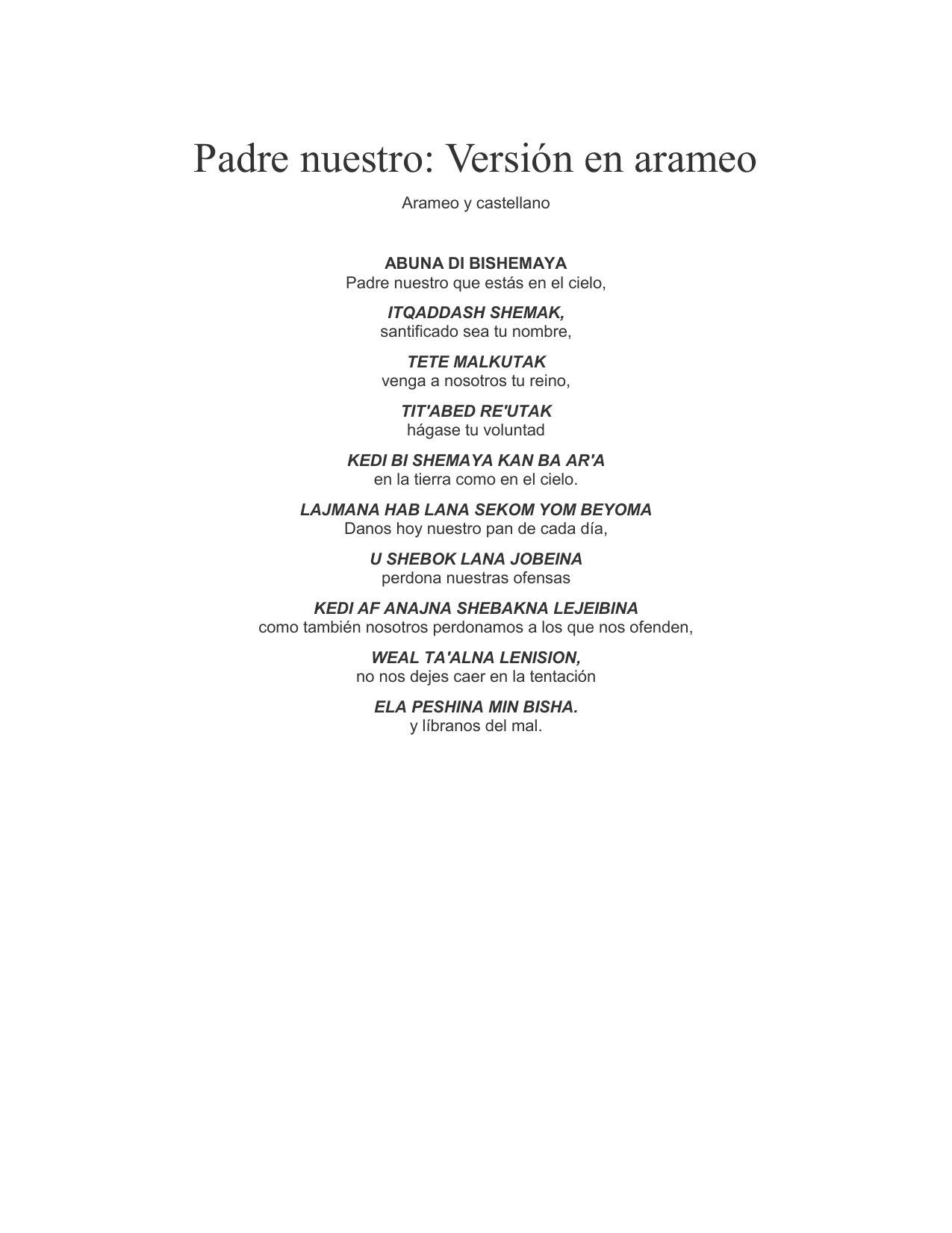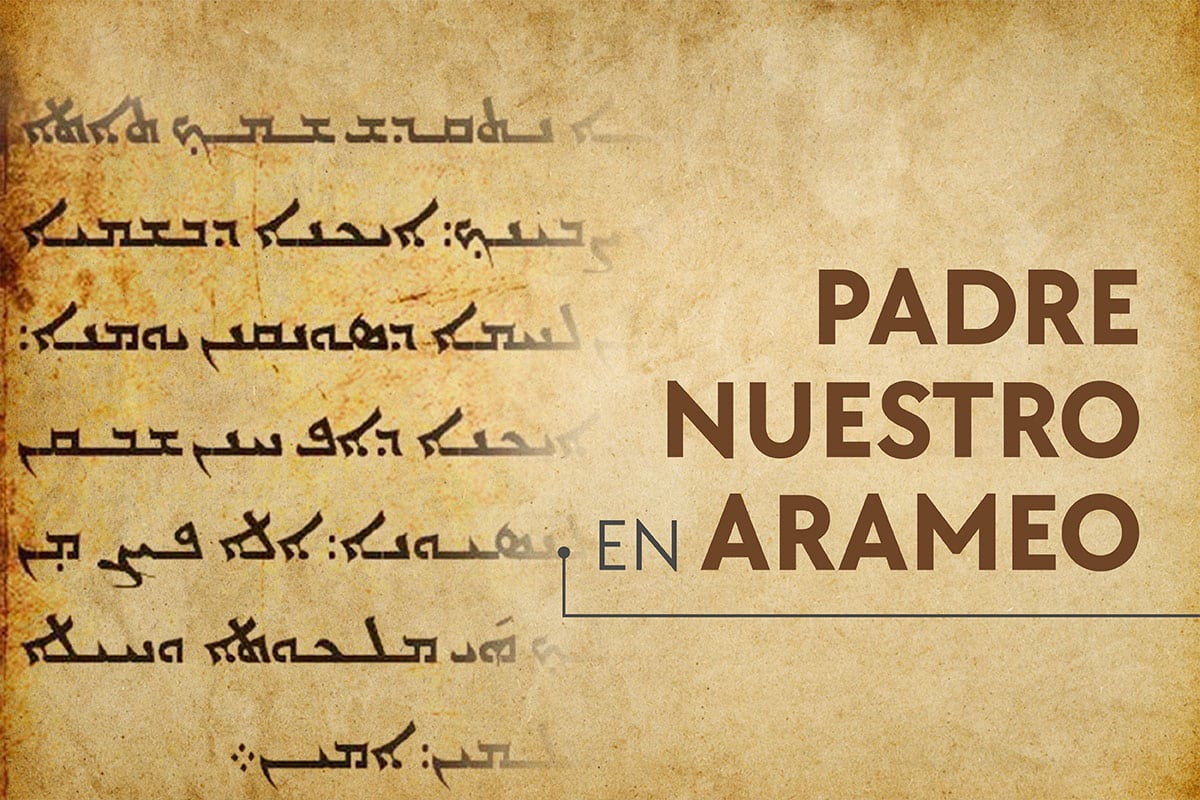El Padre Nuestro Original Traducido Del Arameo

Okay, unpopular opinion time. We all know the Lord's Prayer, right? "Our Father, who art in heaven..." Blah, blah, blah. But have you ever stopped to think about its *actual* origins?
I'm talking about the Aramaic version! The one Jesus probably used. It's like finding the director's cut of your favorite movie.
Forget Everything You Think You Know!
Suddenly, "Hallowed be thy name" feels a bit... formal, doesn't it? Maybe even a tad stuffy.
The Aramaic version is like a cozy chat with your dad. A dad who also happens to be, you know, *God*.
Think about it. Jesus hung out with fishermen. He probably wasn't dropping Shakespearean verses all day.
What's the Big Deal with Aramaic Anyway?
Aramaic was the common language. The street slang of ancient Judea. Imagine trying to explain TikTok in Latin.
It just wouldn't land the same way, would it? You lose the nuance, the vibe, the *feels*.
So, when we're reciting the prayer in English or Spanish, are we really getting the full picture?
The Aramaic Twist: It's All About Connection
Some scholars say the Aramaic El Padre Nuestro has a much more intimate feel. More emphasis on the "you-and-me, Dad" vibe.
Instead of a king on a throne, we're talking to a parent. Someone who wants to help us through our daily struggles. Even with finding matching socks!
For example, the plea for daily bread? Some translations suggest it's less about physical food and more about sustenance for the soul.
"Give us this day our daily bread..." or something deeper?
Maybe it's asking for help being present. For guidance and wisdom to make it through the day without losing our minds during that Zoom meeting.
See? A little less Sunday school, a little more Monday morning survival guide.
And the part about forgiveness? In Aramaic, it's supposedly less about asking for a clean slate and more about releasing the burden of guilt. Heavy stuff!
My Controversial Conclusion (Brace Yourselves!)
I think we should all learn the Aramaic Lord's Prayer. Okay, maybe not *learn* it, learn more *about* it!
Not to replace the one we know, but to enrich it. To add some depth and understanding.
It's like adding hot sauce to your favorite dish. It doesn't change the core flavor, but it definitely kicks things up a notch.
Think about it:
Wouldn't it be cool to connect with the prayer in a way that's closer to its original intention? To maybe get a glimpse into the mind of Jesus himself?
It's worth exploring, right? Even if you just end up saying "Our Father" the same old way.
At least you'll have something interesting to talk about at the next awkward family dinner. You're welcome!
And hey, maybe this is just my weird obsession with ancient languages. Don't judge. We all have our quirks. What is the harm to know a little bit more about El Padre Nuestro Original Traducido Del Arameo?







